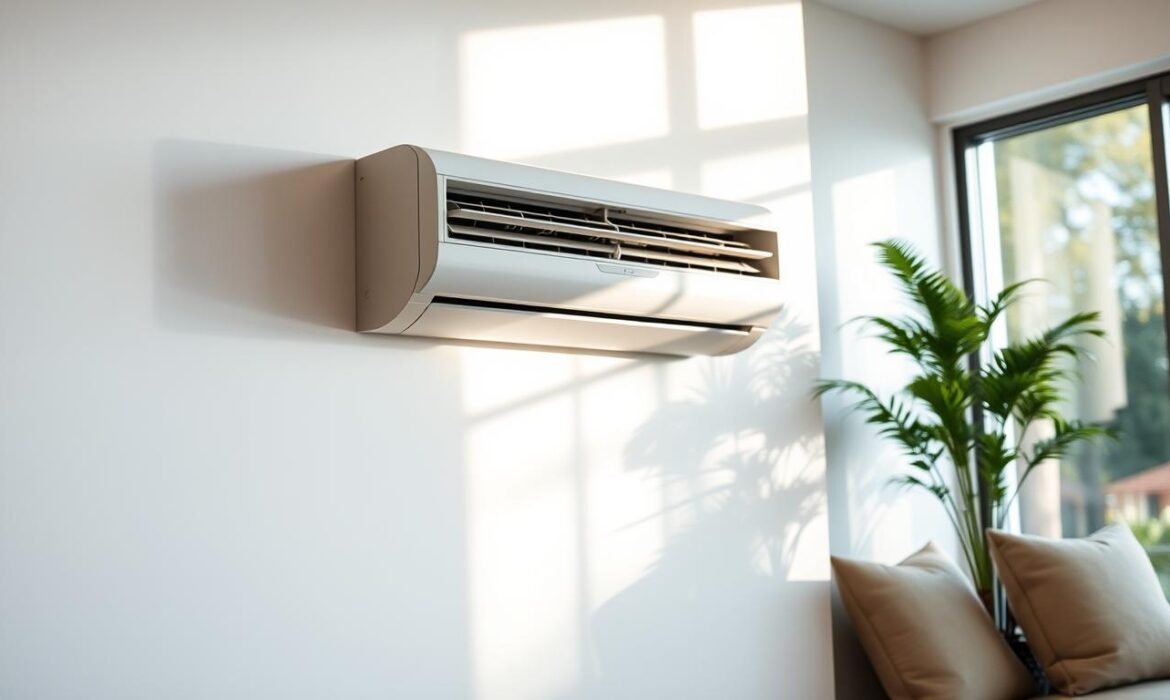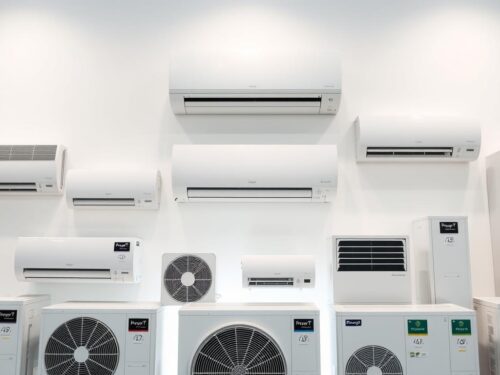Choosing the right cooling system for your space can be tricky. With so many brands and models available, it’s important to know what fits your needs. This guide highlights top-performing units, focusing on efficiency, smart features, and durability.
Singapore’s climate demands reliable cooling solutions. High humidity and limited space require units that balance power with compact designs. We’ll compare leading brands like Daikin and Mitsubishi Electric to help you decide.
Whether upgrading or installing new, this guide simplifies the process. Learn about energy-saving options, smart controls, and long-term cost benefits. Make an informed choice for year-round comfort.
Key Takeaways
- Compare top brands for performance and reliability.
- Focus on energy efficiency to reduce bills.
- Smart features enhance convenience.
- Consider space and humidity control needs.
- Balance upfront costs with long-term savings.
Why Choosing the Right Aircon Matters in Singapore
High humidity and heat make efficient cooling non-negotiable. With daytime temperatures averaging 32°C, your system runs 18-20 hours daily. Picking the wrong unit strains components by 40% and spikes energy bills.
Singapore’s Climate and Cooling Demands
The National Environment Agency reports 30% higher demand during April-May heatwaves. Humidity forces systems to work harder, reducing lifespan. Units like Mitsubishi Electric’s Starmex series counter this with 22% energy savings over five years.
Long-Term Savings vs. Upfront Costs
5-tick models save S$300+ yearly compared to 3-tick units. Daikin’s iSmile Eco cuts monthly bills by S$45 versus older models. Proper sizing prevents 35% efficiency loss, making initial investment worthwhile.
Top Aircon Brands in Singapore Compared
Singapore’s market offers diverse cooling solutions from trusted brands. Each excels in unique areas, from smart technology to humidity control. Below, we compare leading names to help you find the right fit.
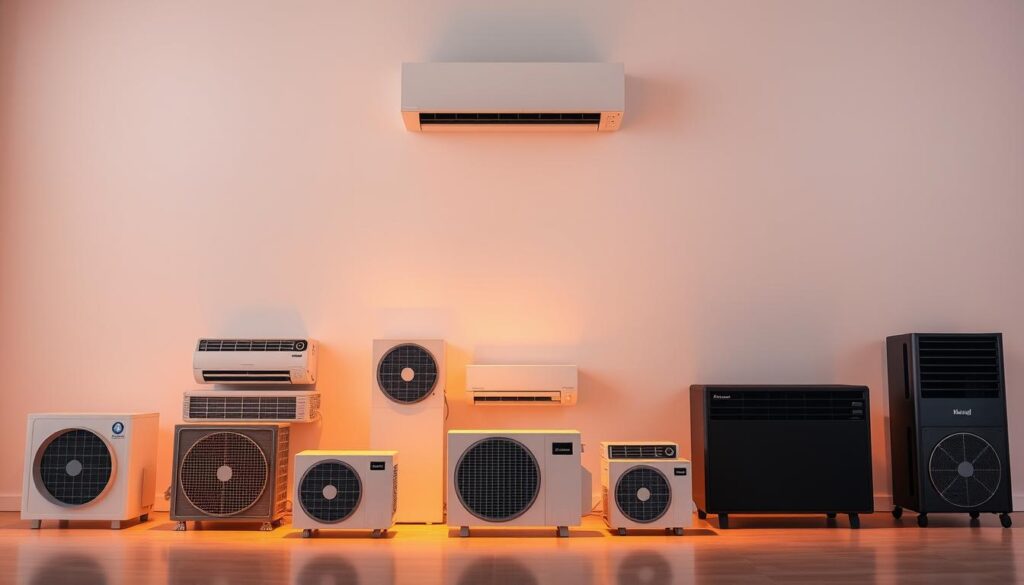
Daikin: Innovation and Smart Features
Daikin leads with eco-friendly tech like the iSmile Eco Series, using R32 refrigerant for 68% lower global warming impact. Their nanoe™ X purification removes allergens, ideal for sensitive households.
The EZi Series offers 5-tick energy efficiency, with a 3-unit system priced at S$4,359. Smart controls via app let you adjust settings remotely.
Mitsubishi Electric: Durability and Efficiency
Built for Singapore’s humidity, the Starmex R32 System 4 features Dual Barrier Coating to resist mold. Priced at S$4,500, it includes a 5-year warranty and 22% energy savings over five years.
PRISM+: Budget-Friendly Smart Cooling
The Zero Smart 4-unit system (S$4,599) balances cost and tech. Voice control via Google Assistant or Alexa adds convenience, while app integration simplifies scheduling.
Panasonic: Humidity Control Experts
Panasonic’s X-Premium line tackles humidity with nanoe-G tech, eliminating 99% of PM2.5 particles. Energy-efficient models align with Singapore’s 5-tick standards.
LG: Sleek Designs with Wi-Fi Connectivity
LG’s ArtCool+ blends style and function, offering 360° airflow and THINQ app integration. Its slim profile suits compact spaces without sacrificing cooling power.
Key Features to Look for in the Best Aircon Singapore
Modern cooling systems offer more than just temperature control—they enhance comfort and efficiency. Whether upgrading or buying new, prioritize features that match your lifestyle and local climate needs.
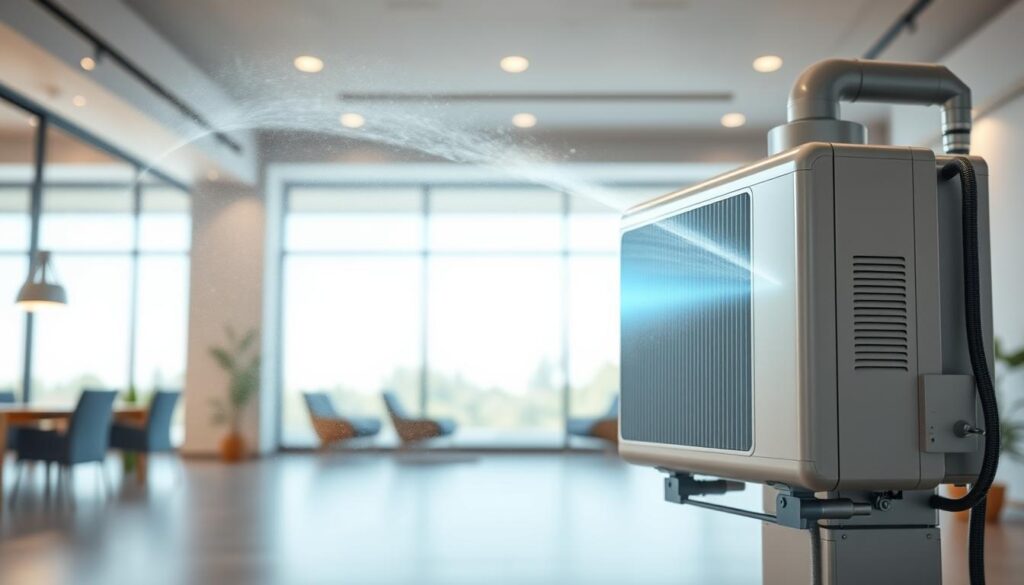
Energy Efficiency: NEA Ticks Explained
The National Environment Agency (NEA) rates units from 1 to 5 ticks. Higher ticks mean better energy efficiency. A 5-tick model uses 30% less power than a 3-tick one, saving up to S$300 yearly.
Look for inverters like LG’s Dual Compressor, which maintains temps within ±0.5°C. This precision reduces wasted energy.
Noise Levels and Quiet Operation
Loud units disrupt sleep and work. Daikin’s Night Quiet mode runs at 19dB—quieter than a library. Mitsubishi Heavy’s Diamond Series drops to 22dB with Sleep Mode.
| Brand | Model | Noise Level (dB) | Special Feature |
|---|---|---|---|
| Daikin | iSmile Eco | 19 | Night Quiet Mode |
| Mitsubishi Heavy | Diamond Series | 22 | Sleep Mode |
Air Purification Technologies
Air quality matters for allergies and odors. Panasonic’s nanoe™ X removes smells 10x faster than standard filters. Daikin’s nanoe™ X also tackles bacteria and pollen.
- Panasonic X-Premium: Eliminates 99% of PM2.5 particles.
- Mitsubishi Electric: Anti-mold coating for humidity control.
Smart Connectivity and App Controls
Wi-Fi models let you adjust settings remotely. Schedule cooling to save 15% on runtime. Brands like PRISM+ offer voice control via Google Assistant or Alexa.
Pro tip: Check app reviews—some interfaces are clunkier than others.
Understanding Inverter vs. Non-Inverter Aircons
Cooling technology has evolved, offering two main types of systems—inverter and non-inverter. The right choice depends on your budget, usage habits, and long-term savings goals. Here’s how they compare.

How Inverter Technology Saves Energy
Inverter aircon units adjust compressor speed to maintain temperature, unlike non-inverters that cycle on/off. This reduces energy consumption by up to 40%, according to NEA data.
“A 3-bedroom flat using a Mitsubishi inverter saved S$580 annually compared to a non-inverter model.”
Benefits include:
- Lower bills: PRISM+ inverter models maintain 65% humidity with 30% less power.
- Fewer repairs: Inverters require 20% fewer service calls due to reduced wear.
When Non-Inverter Might Be Suitable
Non-inverter units cost 30% less upfront but have higher long-term bills. They’re practical for:
| Scenario | Inverter | Non-Inverter |
|---|---|---|
| Daily Usage | Overkill | Cost-effective |
| Budget Constraints | Higher upfront | Cheaper install |
Tip: For spaces like guest rooms or offices with intermittent use, non-inverters may suffice.
Installation Tips for Optimal Performance
Proper installation can make or break your cooling system’s performance. Even top-tier brands lose efficiency if set up incorrectly. Follow these guidelines to maximize cooling power and lifespan.
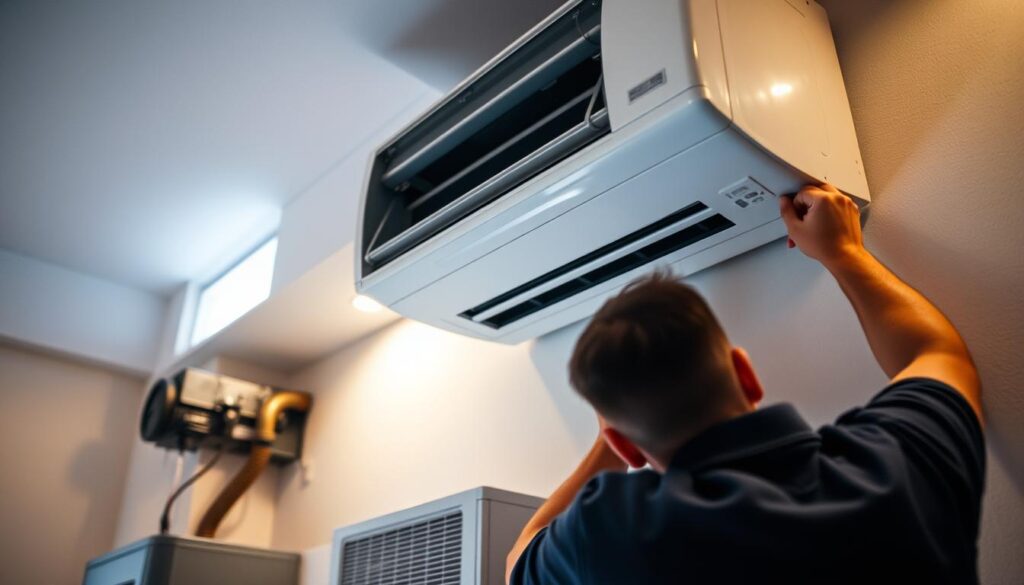
Choosing a Certified Installer
BCA-certified professionals like Newway Aircon ensure precision. With 30+ years of experience, they avoid pitfalls like improper vacuuming—a mistake that reduces efficiency by 25%.
Local experts matter. 338 Aircon’s 165,326+ installations reflect Singapore’s unique needs. Always verify:
- Refrigerant pressure testing to prevent leaks.
- Drainage slope (minimum 1:100 gradient).
- Panasonic’s recommended 15cm wall clearance.
Common Installation Mistakes to Avoid
Poor piping layouts restrict airflow by 40%. Case studies show correct routing improves performance. Other errors include:
- Skipping post-installation vacuuming (voids warranties).
- Ignoring manufacturer spacing guidelines.
- Using uncertified technicians—risking costly repairs.
“A NEA study found 60% of efficiency loss stems from installation errors.”
Balancing Budget and Quality
Smart buyers weigh both upfront costs and long-term value when selecting cooling solutions. A higher price tag often reflects advanced features, but mid-range models can offer surprising efficiency. The key is aligning your budget with usage needs and future savings.
Mid-Range vs. Premium Models
Daikin’s 5-tick System 3 costs S$4,359, while PRISM+’s comparable model is S$3,399. The difference? Premium units like Daikin’s use R32 refrigerant, cutting energy bills by 22% over time. For infrequent use, mid-range options may suffice.
Lifespan also matters. Mitsubishi Electric’s 15-year durability outperforms Midea’s 8-year average. Use our energy efficiency ratings guide to calculate ROI for pricier models.
Hidden Costs (Servicing, Repairs)
Annual aircon servicing averages S$120 per unit—70% of costs stem from installation and upkeep. Repairs add up: compressor fixes cost S$150, while fan motors run S$80. Brands like 338 Aircon offer 3-year maintenance plans to offset surprises.
“A well-serviced unit lasts 30% longer, reducing replacement costs by half.”
- Package deals: Bundled servicing saves 15% versus ad-hoc repairs.
- Warranty checks: Some brands void coverage if uncertified technicians handle installations.
Maintenance Tips to Extend Aircon Lifespan
Regular upkeep keeps your cooling system running smoothly for years. Simple habits like filter cleaning boost efficiency by 15%, while professional checks catch hidden issues early. Here’s how to balance DIY care with expert help.
DIY Cleaning vs. Professional Servicing
Homeowners can safely clean filters and coils monthly. Use a soft brush and mild detergent to avoid damage. For deeper maintenance, schedule aircon servicing annually. Brands like Panasonic offer self-clean modes, reducing professional visits by 30%.
| Task | DIY | Professional |
|---|---|---|
| Filter Cleaning | Monthly | Not needed |
| Coil Inspection | Basic wipe-down | Chemical wash (yearly) |
| Refrigerant Check | No | Essential |
Signs Your System Needs Attention
Watch for musty odors or 30% longer cooling times—these signal mold or airflow blockages. LG’s Smart Diagnosis app detects 85% of issues early, like faulty sensors.
- Strange noises: Grinding sounds often mean motor wear.
- Higher bills: Sudden spikes suggest inefficiency.
- Air quality drops: More dust or allergies? Check filters.
“Newway’s 4,058+ 5-star ratings highlight how proactive care cuts repair costs by half.”
Frequently Overlooked Factors
Many buyers focus only on price and features, missing critical details that affect long-term satisfaction. Beyond brand reputation, factors like proper sizing and support policies ensure your system meets daily needs without surprises.
Room Size and BTU Requirements
NEA guidelines recommend 9,000 BTU for rooms measuring 15–20 sqm. West-facing spaces need 10% more capacity due to heat buildup. Undersized units strain to cool, while oversized ones waste energy.
| Room Size (sqm) | BTU Needed | Example Models |
|---|---|---|
| 10–14 | 6,000–8,000 | PRISM+ Zero Smart |
| 15–20 | 9,000–12,000 | Daikin iSmile Eco |
Warranty and After-Sales Support
Aircon brands vary in coverage—Daikin offers 5 years on compressors, while PRISM+ provides 3. Extended plans cost 15–20% more but add peace of mind. Check these details:
- 24/7 support: Mitsubishi’s hotline outperforms smaller brands’ business-hour limits.
- Installation quality affects claims—improper setups void 30% of warranties.
- Keep receipts and service records for multi-year claims.
“A 2023 NEA survey found 45% of warranty denials stemmed from undocumented servicing.”
Conclusion: Making the Best Choice for Your Home
Your home deserves a system that matches both comfort needs and efficiency goals. From Daikin’s smart tech to Mitsubishi’s durability, top brands offer solutions for every budget.
Before deciding, verify:
- Energy efficiency (NEA 5-tick ratings).
- Installer certifications (BCA-approved).
- Smart features like app controls.
Next steps? Compare quotes from three providers. Schedule your first maintenance at three months to ensure peak performance.
Need help? Book a free consultation with experts to tailor your choice. Cool smarter, not harder.

